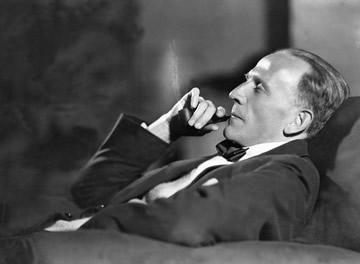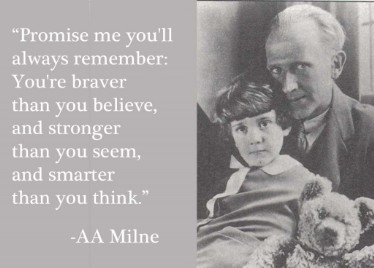January is a wonderful month for birthdays, and sometimes it’s tricky to make sure we talk about all the things about which a Library’s Official Blog should talk. So it is with profuse apologies to the great Alan Alexander Milne that we offer him a belated happy birthday the day after what would have been his 134th birthday.
Milne was born in Kilburn, London, in 1882. His father ran a small private school out of the family’s home, so Milne was, naturally, a student, and had the good fortune to have H.G. Wells as a teacher between 1889-1890. He studied mathematics at Trinity College, Cambridge, and was also a member of the Allahakbarries, the amateur cricket team that also featured the (not-so-stellar) talents of the likes of J.M. Barrie and Arthur Conan Doyle. He served in the Royal Warwickshire Regiment before being seriously injured at the Battle of the Somme on July 7, 1916, and was recruited to Military Intelligence to write propaganda articles for the rest of the war.
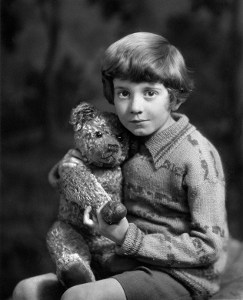 Following the war, in 1920, Milne’s son, Christopher Robin was born, and it was for him that Milne’s most well-known stories were written. What is less known is how much Milne struggled with the fame that his stories about Winnie-the-Pooh, Piglet, Tigger, and his son’s other stuffed toys brought him. Up until the publication of Winnie-The-Pooh in 1926, Milne has found success as a playwright, a satirist, a mystery author, and a poet, among other titles…but following the debut of Pooh, Milne became a children’s writer. This title was only further cemented with the publication of The House at Pooh Corner in 1928.
Following the war, in 1920, Milne’s son, Christopher Robin was born, and it was for him that Milne’s most well-known stories were written. What is less known is how much Milne struggled with the fame that his stories about Winnie-the-Pooh, Piglet, Tigger, and his son’s other stuffed toys brought him. Up until the publication of Winnie-The-Pooh in 1926, Milne has found success as a playwright, a satirist, a mystery author, and a poet, among other titles…but following the debut of Pooh, Milne became a children’s writer. This title was only further cemented with the publication of The House at Pooh Corner in 1928.
Nevertheless, Milne kept quite busy into his later life. He produced a stage version of Kenneth Graehme’s The Wind in the Willows (which was a recent favorite selection of our Classics Book Group!), and wrote a number of screenplays for the burgeoning British film industry, specifically Minerva Films, which was founded by Leslie Howard. But it was for Pooh Bear and his friends that Milne will forever be remembered. In 1979, Christopher Robin unveiled a plaque in Ashdown Forest–the setting for the Hundred-Acre Wood–that echoed Milne’s immortal words: “In that enchanted place on the top of the forest a little boy and his bear will always be playing”, reminding us that there is a space, not only Out There, but within our own hearts and imaginations, that will forever be childhood, where Woozles roam, and friends abound–and that gift is one for which we should always be thankful.
And just yesterday, the good people at Brainpickings, we have this glorious recording of Milne reading the third chapter from Winnie the Pooh, made in 1929 by the Dominion Gramophone Company:
While you savor this utterly delightful reading, consider checking out a few of these books by Milne, that really highlight his talents, and give us a glimpse into the history of the denizens of the Hundred Acre Wood:
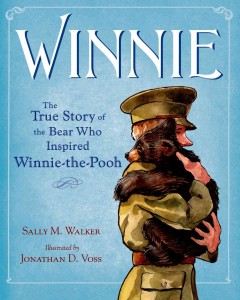 Winnie : The True Story of the Bear Who Inspired Winnie-the-Pooh: While Pooh Bear himself is a remarkable character, the real-life story of his inspiration is equally as engaging. Winnie was a bear who was adopted by Harry Coleburn, a Canadian veterinarian who brought Winnie with him to his training camp at the outset of the First World War. Sally M. Walker’s book is both very informative and wonderfully compelling–and just a little tear-jerky–and will leave readers with a whole new respect for Winnie the Bear, and the character he inspired. Jonathan Voss’ illustrations round out the story beautifully as well (I dare you not to get just a little sniffly at that cover…). Another super rendition of this history can be found in Lindsay Mattick’s Finding Winnie.
Winnie : The True Story of the Bear Who Inspired Winnie-the-Pooh: While Pooh Bear himself is a remarkable character, the real-life story of his inspiration is equally as engaging. Winnie was a bear who was adopted by Harry Coleburn, a Canadian veterinarian who brought Winnie with him to his training camp at the outset of the First World War. Sally M. Walker’s book is both very informative and wonderfully compelling–and just a little tear-jerky–and will leave readers with a whole new respect for Winnie the Bear, and the character he inspired. Jonathan Voss’ illustrations round out the story beautifully as well (I dare you not to get just a little sniffly at that cover…). Another super rendition of this history can be found in Lindsay Mattick’s Finding Winnie.
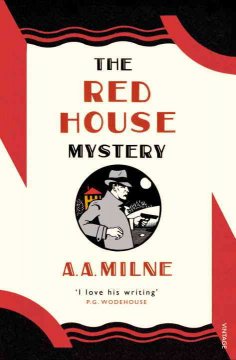 The Red House Mystery: Milne’s only mystery novel (first published in 1922) has remained a classic “locked room mystery”. Even though Raymond Chandler was somewhat less than complimentary of its plot, it has remained a staple of the mystery genre, featuring a house party, the arrival of a surprise guest, and an inexplicable murder that is taken on by a local amateur sleuth who fashions himself as a modern-day Sherlock Holmes. All signs point to the fact that Milne loved crafting this story, and really enjoyed pitting an amateur detective and villain against each other, in an age when fingerprinting, filing, and profiling were taking a good deal of the mystique out of crime solving–and for that reason alone, it’s worth a re-read soon.
The Red House Mystery: Milne’s only mystery novel (first published in 1922) has remained a classic “locked room mystery”. Even though Raymond Chandler was somewhat less than complimentary of its plot, it has remained a staple of the mystery genre, featuring a house party, the arrival of a surprise guest, and an inexplicable murder that is taken on by a local amateur sleuth who fashions himself as a modern-day Sherlock Holmes. All signs point to the fact that Milne loved crafting this story, and really enjoyed pitting an amateur detective and villain against each other, in an age when fingerprinting, filing, and profiling were taking a good deal of the mystique out of crime solving–and for that reason alone, it’s worth a re-read soon.
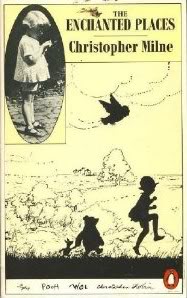 The Enchanted Places: Plainly put, it is incredibly difficult to be the child star of a classic work of literature. Christopher Robin Milne was only one of any number of people who had to contend with the image of themselves that remained trapped on the pages of a book. This book deals with this issue to some extend…as Christopher Robin explains, “My father was a creative writer and so it was precisely because he was not able to play with his small son that his longings sought and found satisfaction in another direction. He wrote about him instead.” Thankfully, the two were able to make peace as Christopher Robin grew older, becoming as much friends as father and son, and that bond is evident in the latter sections of this memoir, which develops into a heartfelt and honest exploration of the Milne men that offers a charming counterpoint to the stories of Winnie the Pooh and his young best friend.
The Enchanted Places: Plainly put, it is incredibly difficult to be the child star of a classic work of literature. Christopher Robin Milne was only one of any number of people who had to contend with the image of themselves that remained trapped on the pages of a book. This book deals with this issue to some extend…as Christopher Robin explains, “My father was a creative writer and so it was precisely because he was not able to play with his small son that his longings sought and found satisfaction in another direction. He wrote about him instead.” Thankfully, the two were able to make peace as Christopher Robin grew older, becoming as much friends as father and son, and that bond is evident in the latter sections of this memoir, which develops into a heartfelt and honest exploration of the Milne men that offers a charming counterpoint to the stories of Winnie the Pooh and his young best friend.
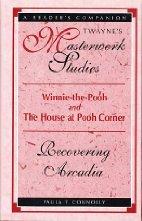 Winnie-the-Pooh and The house at Pooh corner: Recovering Arcadia: Following the smash-hits of Benjamin Hoff’s The Tao of Pooh and The Te of Piglet, people truly began to realize the psychological and intellectual complexities of Milne’s creations. In this highly readable and wonderfully illuminating book, Paula T. Connolly looks at Milne’s own biography, the world in which he wrote, and the finer points of his characters and their world, emphasizing the details that make his lighthearted works into masterpieces. For those looking for a deeper exploration into these classic pieces, as well as recapture the magic of these works, this is definitely the place to begin.
Winnie-the-Pooh and The house at Pooh corner: Recovering Arcadia: Following the smash-hits of Benjamin Hoff’s The Tao of Pooh and The Te of Piglet, people truly began to realize the psychological and intellectual complexities of Milne’s creations. In this highly readable and wonderfully illuminating book, Paula T. Connolly looks at Milne’s own biography, the world in which he wrote, and the finer points of his characters and their world, emphasizing the details that make his lighthearted works into masterpieces. For those looking for a deeper exploration into these classic pieces, as well as recapture the magic of these works, this is definitely the place to begin.

